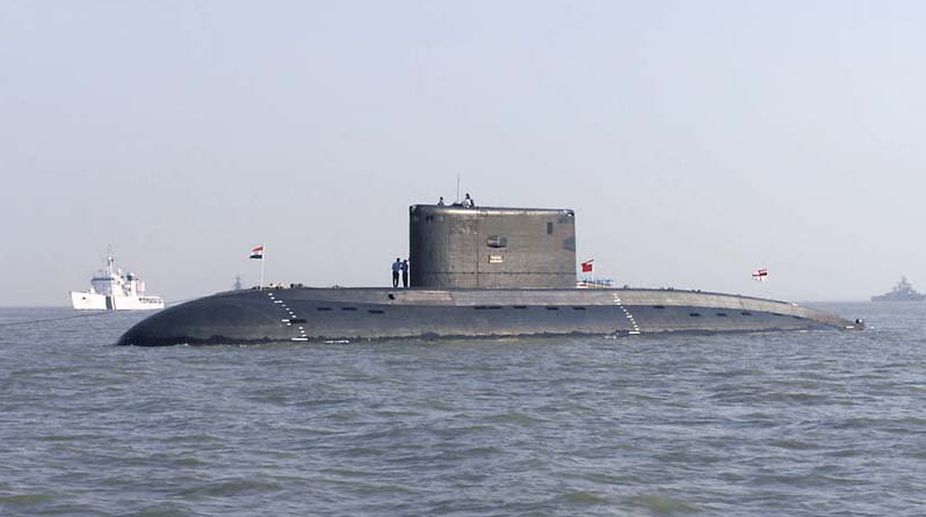‘Indigenous Scorpene submarine successfully test-fires torpedo’
The indigenous Scorpene class submarine has successfully test-fired a torpedo, Defence Minister Arun Jaitley said on Saturday, congratulating the scientists…

(Photo: Twitter)
Oxygen leakage from a torpedo led to the fire on board Naval submarine Sindhurakshak in 2013, and the submarine was holding ammunition that was near expiry, an official report said.
A CAG report, tabled in Parliament on Friday quoted the Board of Inquiry (BoI) that looked into the accident, after scientific analysis and careful consideration inferred leakage of oxygen from a torpedo as a primary initiator of the incident.
The oxygen leak was attributed to material failure of oxygen flask or its associated pipelines.
Advertisement
The BoI proceedings also brought out that the operational deployment of the submarine in August 2013 by Indian Navy was not justified due to the following as the laid down Ships Operating Standards (SHOPS) for the submarine had not achieved the requisite Harbour and operational evolutions.
Complete 'Work Up' of the submarine was not conducted when the submarine was prepared for operational deployment as the 'Work Up' was completed within one week instead of prescribed two weeks.
The trials and calibration of Navigational aids and sensors should be completed prior to deployment of a submarine for 'Work Up' with any consorts. However, in the case INS Sindhurakshak, the Sea Acceptance Trials of two critical equipment were not completed even at the time of its preparation for operational deployment, the CAG report said.
"Submarine authorities concerned did not properly assess the crew fatigue, besides, the submarine was holding ammunition nearing life expiry," the report said.
Indian Navy appraised told the national auditor that as the acceptance trials are extremely stringent, however due to advent of monsoon the acceptance trials were not attempted as the sea state was appreciated to be beyond the limits laid down in the protocol.
For inadequacies in completion of SHOPS, Indian Navy stated that with the submarine's sound material state, satisfactorily completing Task-II and accomplishing a torpedo firing, the inadequacy of not having completed SHOPS was not overwhelmingly weighing against embark on a deployment.
INS Sindhurakshak was Russian-made Kilo-class diesel-electric submarine of the Indian Navy which cost Rs 404.54 crore, and was commissioned in December 1997.
The submarine suffered a minor fire incident in 2010 and a major one on 14 August 2013, which resulted in its sinking at Mumbai's naval dockyard.
The report added that between 2007-08 and 2015-16, Indian Navy ships and submarines were involved in 38 accidents, primarily attributable to fire, explosion, and flooding.
"The Indian Navy since inception, had no institutionalised framework to deal with safety issues. A dedicated organisation for dealing with safety issues was setup by the Indian Navy only in 2014, however, it awaits government's sanction," it added.
Advertisement